Algae Grows the Future
NSF Awards: 1610164
This project addresses the need to cultivate engineers' holistic and critical understanding of the global, economic, societal and environmental impacts of engineering solutions. In this project, algae provides the basis for a collection of inquiry-based educational activities that bring together science, engineering and humanities to foster an understanding of the broader context of engineering work. A series of cost-effective, multidisciplinary, adaptable and transferrable hands-on experiments will be developed to introduce engineering and science principles through algae's versatility as a renewable fuel source, tool for greenhouse gas mitigation, and its role in the treatment of wastewater. Additional synergistic activities will be incorporated through introduction of ethical, social, and environmental issues related to these problems and analysis of proposed solutions. The three main objectives of the project are: (1) to recruit and retain students in STEM degree programs, (2) to increase self-confidence and self-esteem of students from underrepresented groups in STEM fields, and (3) to develop educational methods that explore uses of algae to address global engineering challenges.
Through extensive partnerships, this project impacts students at the K-12, community college and university levels of STEM education. A partnership with the Center for Aquatic Sciences at the Adventure Aquarium in Camden (NJ) brings algae-based engineering education to the broader community through family-based science education and informal science education.
Algae Grows the Future
NSF Awards: 1610164
This project addresses the need to cultivate engineers' holistic and critical understanding of the global, economic, societal and environmental impacts of engineering solutions. In this project, algae provides the basis for a collection of inquiry-based educational activities that bring together science, engineering and humanities to foster an understanding of the broader context of engineering work. A series of cost-effective, multidisciplinary, adaptable and transferrable hands-on experiments will be developed to introduce engineering and science principles through algae's versatility as a renewable fuel source, tool for greenhouse gas mitigation, and its role in the treatment of wastewater. Additional synergistic activities will be incorporated through introduction of ethical, social, and environmental issues related to these problems and analysis of proposed solutions. The three main objectives of the project are: (1) to recruit and retain students in STEM degree programs, (2) to increase self-confidence and self-esteem of students from underrepresented groups in STEM fields, and (3) to develop educational methods that explore uses of algae to address global engineering challenges.
Through extensive partnerships, this project impacts students at the K-12, community college and university levels of STEM education. A partnership with the Center for Aquatic Sciences at the Adventure Aquarium in Camden (NJ) brings algae-based engineering education to the broader community through family-based science education and informal science education.
-
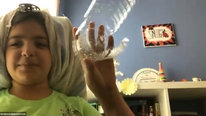 Hands-on Engineering in the Time of COVID
Hands-on Engineering in the Time of COVID
Jennifer Kidd
-
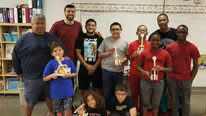 SEBA: STEM Engagement Through Mentoring
SEBA: STEM Engagement Through Mentoring
Rick Greer
-
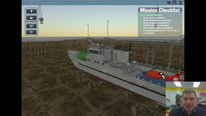 FLEET: Virtual Engineering Video Game
FLEET: Virtual Engineering Video Game
Michael Briscoe
-
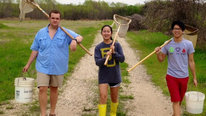 Showcasing iBEARS: Transforming Science Education
Showcasing iBEARS: Transforming Science Education
Tracey Sulak
-
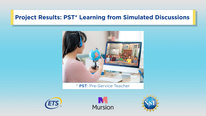 Project Results: PST Learning from Simulated Discussions
Project Results: PST Learning from Simulated Discussions
Heather Howell
-
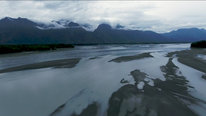 ANSEP Innovation and Success during COVID
ANSEP Innovation and Success during COVID
Herb Schroeder
6902 Views
Continue the discussion of this presentation on the Multiplex. Go to Multiplex
6902 Views
presentation
has been viewed
Related videos you might be interested in...
-
 Hands-on Engineering in the Time of COVID
Hands-on Engineering in the Time of COVID
Jennifer Kidd
-
 SEBA: STEM Engagement Through Mentoring
SEBA: STEM Engagement Through Mentoring
Rick Greer
-
 FLEET: Virtual Engineering Video Game
FLEET: Virtual Engineering Video Game
Michael Briscoe
-
 Showcasing iBEARS: Transforming Science Education
Showcasing iBEARS: Transforming Science Education
Tracey Sulak
-
 Project Results: PST Learning from Simulated Discussions
Project Results: PST Learning from Simulated Discussions
Heather Howell
-
 ANSEP Innovation and Success during COVID
ANSEP Innovation and Success during COVID
Herb Schroeder

Kauser Jahan
Head and Professor
Welcome! Thank you for taking the time to watch our "Algae Grows the Future" video! This video introduces pre-college, first year engineering students, K-12 students and educators to fundamentals of engineering and various engineering disciplines via the use of algae. The topic stimulates critical thinking as to how a microbe like algae can revolutionize the world in the future by its multi-faceted use. This project also exposed students to topics related to social justice, racial-gender biases, and ethics in engineering. Please visit our website for resources.
We are excited to receive feedback from you regarding:
We welcome any general comments/questions as well. We hope this video sparks your curiosity about how algae can grow the future.
Sazzad Hossain
Great!
Kauser Jahan
Head and Professor
Thank you for visiting our site.
Steven Chin
A very interesting and informative video which will inspire students to further investigate this very important multi-dimensional topic.
Kauser Jahan
Head and Professor
Thank you for watching our video.
Cheryl Bodnar
The first-year engineering students that participated in this project really enjoyed the ability to be able to see the algae grow and observe how its growth changed as a function of the conditions that were selected. Of particular interest was the integration of social justice related issues and how different populations around the world could benefit from this unique resource to meet their needs.
Kauser Jahan
Head and Professor
Thank you for the comments.
Nickolay Hristov
Senior Scientist, Director, Associate Professor
Cheryl, I am happy that you brought up the point about social justice and how topics of environmentalism, water conservation and innovative engineering solutions to such challenges offer opportunities for learning and change. Do you have a specific example how that “integration” happened within the project? Are you part of the project team?
Cheryl Bodnar
I was a part of the project team that implemented the Algae project into our first-year engineering design course at Rowan University. As part of the experience, we would have each student group select a country that they represented (out of a list of provided choices), and then the students were asked to learn more about that country including the geographical, economical, political, and societal elements that may influence their ability to place a facility that produces algae within the country. This type of approach led to lively discussions about factors that students may not have otherwise considered such as the availability of water for growing algae in comparison to the need for clean water sources for that population. Other discussions included what sources of labor could be used within the countries and whether certain populations may or may not benefit from the existence of an algae based facility.
Overall, it definitely pushed students to think about elements that they would not have considered as part of a standard engineering design project.
Kauser Jahan
Head and Professor
Thanks Cheryl for responding. Another example is that we tied activities with various issues from social sciences and the humanities.
Algae requires a lot of water to grow. So we exposed students to issues in water politics and water equity through watching Water Wars. Gender and water are also intimately related and we discussed how women in most societies are burdened with carrying water that deprives them of education and also healthcare.
Stephanie Farrell
Great video! What a great way to introduce a variety of technical topics in addition to social justice, climate change and sustainability. It looks like this interdisciplinary project would be easily adaptable in many different contexts.
Smitesh Bakrania
What a great way to expand the impact of research beyond the fundamentals. You have inspired many and I am sure they all appreciate it.
Kauser Jahan
Head and Professor
Thanks for watching Smitesh.
Stephen Uzzo
Chief Scientist
Jahan –
Thanks for your ambitious work in such a salient topic! Literally a quickly growing are in the realm of engineering, sustainability and economic aspects of such things as aquaculture/mariculture. In the work focused on practice, how have you evaluated the efficacy of the hands-on experiments and adjunct curriculum in this work? There is so much negative press about algae blooms and their use as an indicator of decline in water quality, even changes in affect and misconceptions would be interesting to hear about.
Kauser Jahan
Head and Professor
That is an excellent comment. We will add activities related to HABs and algae misconceptions. I appreciate your feedback.
Billy Spitzer
PI
Thank you for sharing this intriguing project working at multiple levels of the K-16 education system. I was curious to learn more about what kind of algae you are using, and how the experimental setup differed from elementary to middle to high school classrooms. Also, I would be interested in hearing more about how students made the connection between the algae experiments and the simulation -- this seemed like an interesting way to build a more sophisticated understanding. Can you share more about the learning goals for students at different age levels, and how you go about assessing them?
Kauser Jahan
Head and Professor
I hope you saw my response. Thank you for some excellent questions and comments.
Kauser Jahan
Head and Professor
We actually obtained local pond water and grew the algae by adding nutrients via commercial fertilizers for the school outreach activities to keep it simple. We noticed over the years with our K-12 outreach that many kids love getting their hands wet with algae experiments while some did not. So the virtual platform gave us the ability to teach students that engineers can also develop cool games for teaching and learning. So our overarching goal was to expose K-12 students and educators to engineering careers by using something that is familiar to all. Biology and environmental education is common and required at all grades in the schools. As such, we felt that algae would be a great example to stimulate thinking and excitement. The experiments are also very cost effective and the multi-faceted use of algae from fish food to energy makes it appealing. We use pre and post surveys in the schools to assess impact of our activities. Also teachers provided us feedback via surveys also.
Billy Spitzer
PI
Working with local pond water sounds like a great way to get started, and the simulation platform can serve as both an alternative and a complement. I noticed students using a variety of instruments, am curious about what you have found to be most appropriate for different age groups and what is affordable, accessible and usable by teachers and students. Can you share some of the results from the pre/post and teacher surveys?
Kauser Jahan
Head and Professor
Since algae needs sunlight, it has to be grown in clear reactors which can be plastic or glass bottles, jars etc. An aquarium pump is only $10 for air addition to stimulate growth. We prepared a green color chart to mimic spectrophotometric measurements of green color so that students could monitor algae growth and plot them with time since schools do not have spectrophotometers. The experimental method was the same for all ages. However, data analyses and concepts from math, physics, chemistry were more challenging for higher grades.
Our experience with school mentoring was that this project was fun for all ages. The examples are simple-also forcing students to work in teams and think about how algae can grow the future of a country was fun and stimulating. I will post the results separately as they are in plots and comments.
Kauser Jahan
Head and Professor
For Students, we were interested in the pre- and post results of the following questions out of ten:
a) Do you know what an engineer does?
We always were at an average of 10% response in the pre-testing where students said YES while Post survey after the activities we were always at 95% and above.
b) Do you aspire to be an engineer?
We always were at an average of 10% response in the pre testing where students said YES while Post survey after the activities we were always at 85% and above.
For Teachers, two questions were important for us:
a) What the ease of integrating this project into your coursework? 1-5 (1-Very Easy 5= Extremely Difficult)
Our teachers workshop surveys indicated an average score 80% felt it was very easy to easy (1 and 2) while 20% felt it was somewhat (score 3) difficult
Comments from teachers:
I love the fact that I can pick and choose activities to get the message across.
Experiments are cheap and affordable and do not require a lot of technical expertise.
Algae is like growing plants
Some math and plotting was challenging.
I like the integration of humanities and the presentation on "How algae can grow the future of a country"
Hope this is helpful
Billy Spitzer
PI
Thanks for all the additional details!
Kauser Jahan
Head and Professor
You are welcome. I am very excited to see all the visits to our project site and also the video. We enjoyed working on this project.
Michael Moore
I love the simplicity of algae and how it allows students to explore their own questions in a cost-effective manner. I would love to know more about the training you do and how you help instructors use algae as a platform to support equity and inclusion.
Kauser Jahan
Head and Professor
Dear Michael,
Thank you for watching our video. We have a K-12 resource page posted at http://users.rowan.edu/~jahan/ECT/Algae.htm.
The experiments are simple enough that the teachers just need half a day training. Almost all schools around the country teach students microbes and want to invest in Project based learning. So this project is simple yet carries a powerful message. Our webpage shows how we tied issues like gender/race/ethics/poverty/malnutrition etc to the core scientific fundamentals. For example, when deisgning an experiment we talked about Stephanie Kwolek and Rosalind Franklin-how one was confident and the other was less confident. Hope this helps. Feel free to contact us if you have more questions.
Stephen Uzzo
Chief Scientist
Thanks for sharing the curriculum. Algae is so pervasive and important in the food web, health of oceans, corals, plankton and cyanobacteria, we literally can’t breath without it. Wondering if you have thought about some aspects of the curriculum that might help students make the connections among algae and everything else?
Kauser Jahan
Head and Professor
The goal of the project was to connect the multifaceted use of algae in all walks of day to day life. We also partnered with the NJ State Adventure Aquarium's non profit education arm Center for Aquatic Sciences to help children make connections to biological systems with engineering. We also emphasized that it uses carbon di-oxide a green house gas and also generates oxygen.
Starting from food for fish to so many uses (biofuels, cosmetics, nutraceuticals, aquatic food, materials etc). It was difficult to capture the depth of all our activities in the 3 minute video.
Kauser Jahan
Head and Professor
Some publications that maybe useful to the community:
Jahan, C. Bodnar, S. Farrell, Y. Tang, I. Noshadi, CS Slater DS Miller (2019) Improving Students’ Learning Behaviors through Hands-on Algae Based Project, ,Intl.Journal Engg Education, Vol 35, No. 5,Pages1343-1352.
K. Jahan, Roisin Breen, Patricia Hurley, Erin Pepe, Jaiyun Shen (2018) An Algae-Based Curriculum for Globally Conscious Engineering Education, International Journal for Cross-Disciplinary Subjects in Education, Volume 9, Issue 1, ISSN 2042-6364 (Online).
K. Jahan, R. Breeen, P. Hurley, M. Mittenzwei and D. Murray (2017) Algae Based Engineering Education, Proceedings of the World Congress on Education, Dublin, Ireland, July 2017. Best Extended Abstract Award.
K. Jahan, R. Breen, P. Hurley, M. Mittenzwei, D. Boileau and D. Murray (2017) Algae Grows the Future, Proceedings of the 2017 Annual ASEE Conference, Columbus, Ohio
K. Jahan, R. Breen, P. Hurley, M. Mittenzwei, D. Boileau and D. Murray (2017) Development of Algae-based Experiments to Teach Engineering Concepts, Proceedings of the ASEE Middle Atlantic Conference at Morgan State University, April 8th, 2017.
Tang, Y. and Hare, R. "Adaptive Narrative Game for Personalized Learning" IEEE International Conference on Service Operations and Logistics, and Informatics , 2019 10.1109/SOLI48380.2019.8955069 Tang, Ying and Liang, Joleen and Hare, Ryan and Wang, Fei-Yue "A Personalized Learning System for Parallel Intelligent Education" IEEE Transactions on Computational Social Systems , v.7 , 2020 10.1109/TCSS.2020.2965198Nickolay Hristov
Senior Scientist, Director, Associate Professor
Well paced and engaging presentation with an impressive scope and reach for the project! I was pleased to see the references to environment and conservation, water management, waste treatment and connections to society and justice. By nature of the STEM for All event, these presentations often take the feel of promotional videos/statements. I am wondering what issues you have run into and how you are trying to resolve them. What can you tell us about the project team and how you work together? How far along are you in the project timeline and what would you change if you were to start over with the knowledge you have now? These points might be helpful to others attracted to the idea of using algae in their educational and professional development programs.
Kauser Jahan
Head and Professor
This June is our last month for this three year grant. In the pandemic we ran into issues of moving to online delivery. As the university was under lockdown for a while last year, maintaining our algae was a little challenging. I would ensure that there is a project coordinator as it is a lot of work to coordinate with educators to visit their classrooms. This maybe more unique to my situation as I also became department head when the award was charging full steam. I also believe that we could have trained faculty from the humanities and social sciences about the project and they and their students would enjoy it too. That is what I would change if I had to do it over again. Everyone should encourage the next generation to understand concepts of sustainability, green engineering, alternate energy and pollution prevention.
Ferhat Zerin
What an awesome project! It was inspiring to see how complex engineering ideas were made simple to engage students of various ages. Well done!
Kauser Jahan
Head and Professor
Thank you for visiting and watching our video.
Charisma Choudhury
What a novel and holistic way to teach Engineering!
Kauser Jahan
Head and Professor
Thank you for visiting our site and watching the video. Please integrate components you liked into your teaching.
Aashaz Zia
I loved the video. It was sssssssssso interesting.
Kauser Jahan
Head and Professor
Thank you. What part was interesting?
Aashaz Zia
The game Algae City looked super cool. Is it possible to try it out?
Virginia Davis
Great to see someone highlighting algae's current use and future potential as a sustainable material instead of just an icky nuisance! Our research is focused on targeted growth of filamentous algae but we had not come up with any activities for outreach yet. What age range are you targeting? Are their any HSE concerns you have to deal with? Would be interested in learning more about the activities and potentially incorporating them in our work! It meshed very well with our work on engineering as altruism and the engineering grand challenges (see our video).
Kauser Jahan
Head and Professor
We were not using a pure culture for outreach activities. The common species that we got from local ponds typically were Chlorella vulgaris and Scenedesmus Abundans. K-12 students were primarily learning how to grow and obtain growth data over 10 days - so the experiments were short. The growth studies were the only ones requiring live cultures. The other experiments gas transfer, algae gels etc did not require live algae. The participants wore gloves. There were no health and safety issues. There are details on our webpage http://users.rowan.edu/~jahan/hunter/algae_work...
Thank you for visiting, watching and commenting.
Kauser Jahan
Head and Professor
Our activities were developed such that activities can be used for K-12, pre-college and first year engineering students.
Tahia
Very educational video. Watched it with my 4 year old, now he wants to get some algae to try making algae gel
Kauser Jahan
Head and Professor
Best feedback ever. I am happy that the video is getting 4 year old kids excited. Thank you for visiting and watching our video.
Selina Aamirah
Algae is amazing and we hope it helps to build a cleaner and more sustainable future. Thank you for raising awareness about such a cool topic!
Kauser Jahan
Head and Professor
Thank you for visiting and watching the video.
M Islam
Excellent
Dr. India
This video is very informative and knowledgeable. Through this video the information you are transmitting, will transform the learner. This will change our mother nature for good. Due to COVID 19 pandemic we know the importance of oxygen. Algae can be the game changer.
Kauser Jahan
Head and Professor
Thank you for watching. Algae can be a game changer.
Chowdhury Ahsan
Very interesting and thought provoking video. The project will not only inspire students of US, but also students of Asian countries, where we have abundance of sun light to grow algae.
Kauser Jahan
Head and Professor
Thank you for visiting and watching our video. Lots of potential in countries that have water and sunlight.
Toby Baker
Thank you for this presentation. The environment is so important. There are many ways to use algae. It can be applied to different grade levels in K-12.
Kauser Jahan
Head and Professor
Thank you so much for visiting our site. Please feel free to visit our resources page.
Thomas Veague
This is such an exciting project! I really like the emphasis of the three main objectives that you outlined in the project description. How will this algae work continue as we emerge from a year of virtual/hybrid teaching and learning?
Kauser Jahan
Head and Professor
Thank you for visiting our video. We will continue this project beyond the term of the grant by offering it to our first year engineering students as part of their First Year Engineering Clinic course.
For K-12 outreach we will offer activities through our nationally recognized Engineers on Wheels initiative.
Thomas Veague
Hooman
Kudos to you and your research lab!
Lisa Schrumpf
This is truly revolutionary!!!
I have piloted this program with my students and I can say firsthand that students enjoyed the activities and they learned a great deal about how we can change the future and protect our planet through science and engineering uses for algae!!!
Kauser Jahan
Head and Professor
Thank you Lisa. I hope we can bring it back this Fall. We also spent time making many activities virtual.
Lance Bush
Kudos on such an effective project at inspiring students in engaging in scientific studies, and also getting them the experience in a real world application that they could actually continue to follow or chose to be actively engaged with. I am super impressed by the student evaluations noting the large gains in interests (10%-85%). I don't have a question, as several of mine have already been asked previously - just congratulations and thanks for the work you are doing.
Kauser Jahan
Head and Professor
Thank you so much for your positive comments. This was a very successful project and we were able to garner student interest abd spark their curiosity.
Choudhury Eng.
I do appreciate the initiative taken to dig-out the possibilities of utilizing the Nature's abundance of resources that the God has created and left for meeeting the needs of the mankind, nature, environment, and so on; by using those resources directly, and / or transforming; or utilizing as a guide for finding other possibilities.
In my opinion, the video could have some more information, that could help in making more impact on the people's idea and inclination to the object and objectives of the "Algae Grows the Future".
Hope for its advancement and coming for the benefit of human beings, and environment.
Thanks Kauser Jahan and your team.
Choudhury Naser, M. Eng., P. Eng.
Choudhury Eng.
I do appreciate the initiative taken to dig-out the possibilities of utilizing the Nature's abundance of resources that the God has created and left for meeeting the needs of the mankind, nature, environment, and so on; by using those resources directly, and / or transforming; or utilizing as a guide for finding other possibilities.
In my opinion, the video could have some more information, that could help in making more impact on the people's idea and inclination to the object and objectives of the "Algae Grows the Future".
Hope for its advancement and coming for the benefit of human beings, and environment.
Thanks Kauser Jahan and your team.
Choudhury Naser, M. Eng., P. Eng.
Kauser Jahan
Head and Professor
The video was a 3 minute representation of the overall essence of the project with images from various activities. Thank you for visiting and watching our video.
Raunak Jahan
I really liked the video. I also think the title said it all, ‘ Algae Grows the Future’. Very aptly titled. The diverse uses of Algae is very promising worldwide specially in a developing country like ours Bangladesh.Rjahan,teaching O- level chemistry
Kauser Jahan
Head and Professor
Thank you so much for your kind thoughts and for visiting our site and taking time to watch our video. We hope to see good use of algae across the globe.
j robledo
great project and great future
excellnt
Kauser Jahan
Head and Professor
Thank you so much for visiting our site and watching our video!!
Adnan Rajib
Innovative way of engaging kids in science topic. The video game part was really exciting!
Adnan Rajib
Innovative way of engaging kids in science topic. The video game part was really exciting!
Kauser Jahan
Head and Professor
Thank you so much for visiting our site and watching our video!!
Almeer Asif
You are doing such incredible work. Amazing feat of engineering.
Kauser Jahan
Head and Professor
Thank you so much for visiting our site and watching our video!!
Mahaa Mayeesha
This is an interesting and innovative initiative to promoting engineering themes to K-12 students using a widely available organism. I'm curious as to how you address the climate crisis in these modules-what are some ways algae can help prepare us for a warming wold? Conversely, how do you frame the beneficial uses of algae while acknowledging the dangers posed by harmful algal blooms? My final thought is regarding the relation between algae and human health- do any of your modules discuss or explore the risks posed to human health via consumption of algae containing toxins (that may lead to diarrhea, fevers, headaches, etc)?
I look forward to hearing more about the future of this project. Where do you see this work 5 years from today and what impact do you imagine it will have on young minds?
This is great work and a wonderful video!!
Tariq Ahmed
Kauser,
I thought this was an excellent video discussing your wonderful idea to inspire young minds. Do you assess/survey students about their interest in environmental engineering pre/post implementation of these modules? And do you discuss other disciplines that are involved in this type of research (i.e. environmental science, environmental health, chemistry, etc) or solely focus on engineering?
Best regards,
Dr. Tariq Ahmed, PE
Kauser Jahan
Head and Professor
This is a multi-disciplinary project. We showcase how all branches of engineering and the sciences can use algae to their advantage. The disciplines mentioned in your comment are an obvious fit, but we also get into mathematics, physicals and even social sciences.
Kauser Jahan
Head and Professor
Our main focus of the project was to shine light on the useful applications of algae. There is a module dedicated to how algae can cause taste and color issues in drinking water, and also the need to curb nutrient discharges as they promote HABs. Harmful toxins that are detrimental to human health are also discussed.
The world is rapidly changing in terms of alternate energy sources and use of green engineering products. We are hopeful that this project will promote critical thinking.
Ray Tracy
Dr. Jahan,
I was wowed by the different experiments shown in this video and really liked the cool part with the algae gels. Are those materials commercially available for those of us who want to try it out?
Kauser Jahan
Head and Professor
Sodium alginate and calcium chloride are readily available for the preparation of algae gels. The algae gel modules is very popular with children. It is also a cool lesson in chemistry and chemical reactions.